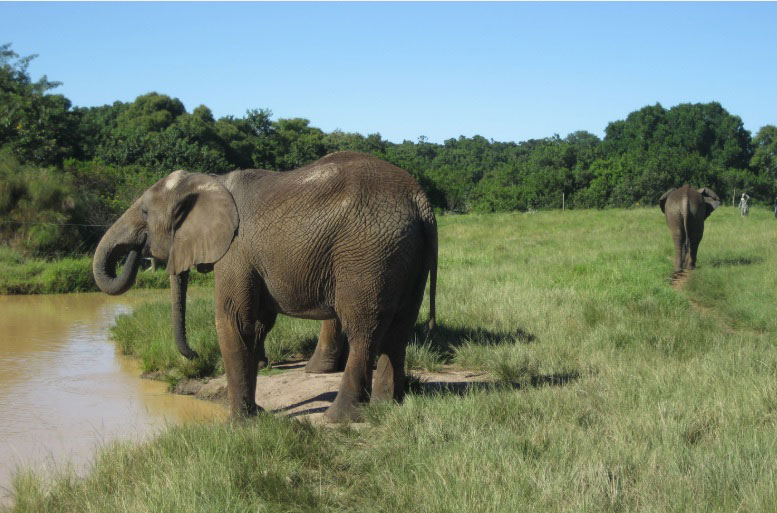
The African elephant (Loxodonta africana) is the largest land mammal in the world and one of nature’s great ecosystem engineers, being a major contributor to maintaining the balance between wooded and grass ecosystems.
- An elephant’s trunk has about 50,000 muscles which are made up of six muscle groups without any bones. Compare this to the 639 muscles in the entire human body! The closest thing humans have to an elephant’s trunk is our tongue. Elephants use their trunks to breathe, drink, eat, smell, snorkel, wrestle, to communicate, to touch, feel, hold, grab and pull Any other appendage that is so versatile is not know.
- Elephants cannot jump, gallop or canter. They can only walk at various speeds – from a slow walk to a moderate ‘amble’ and fast shuffling ‘run’ where their stride remains the same but the leg speed increases. Their top speed is about 24 km/hr
- Elephants can be either left or right ‘handed’. The babies are born not knowing how to use their trunks and will only learn as they grow. They are similar to humans in showing a preference between grasping objects to the left or right. It is obvious which side elephants prefer because the tusks get worn down more on that side and will, therefore, be shorter on the preferred side.
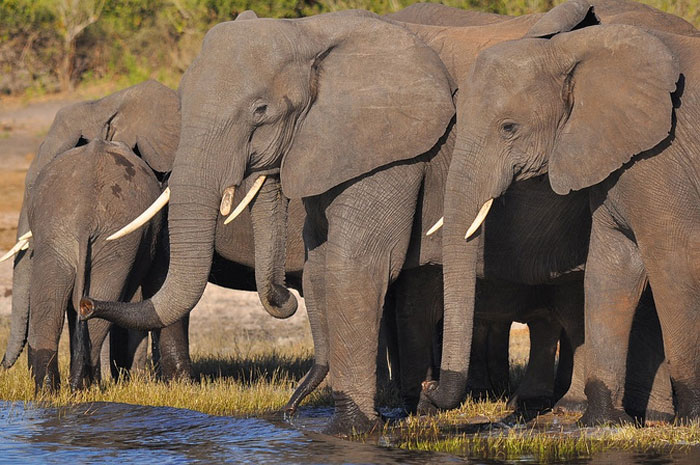
- The elephant’s sense of smell is estimated to be four times that of a bloodhound and approximately 160 times that of a human. They can smell water from a very far distance, even many kilometres away.
- Many tree species rely on elephants to spread their seeds. But that is not all. Many seeds are more likely to germinate having passed through an elephant’s gut. Elephants transport these seeds for many kilometres as they process their food, before depositing them in their dung balls – a vital fertiliser and moisture package for those seeds, and a kick-starter to life.
- During the dry season, elephants provide access to water for other species. They dig holes in dry riverbeds to get to deep water – opening the water up for other species not able to dig. They also enlarge and compact mud wallows to form large pans that fill up with water – again providing water for other species.
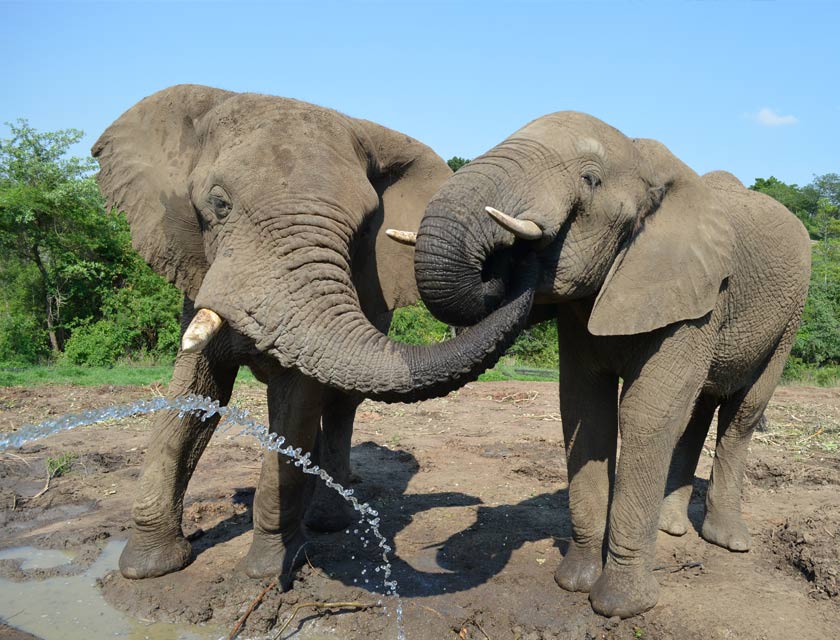
- Elephants are the heaviest land mammals, at 4 to 7 tons, and the second tallest land mammal (behind the giraffe) at 3,1 to 3,4 metres at the shoulder. The largest elephant on record weighed 10,9 tons and was 3,9 metres at the shoulder.
- Elephant herds are led by older cows (matriarchs), with young bulls forming their own smaller herds after leaving the breeding herd. Old bulls often roam on their own, or with a few companions (often referred to as askaris), meeting up with breeding herds as cows come into season.
- Elephants live for 50 to 70 years. Bulls only start contributing to the gene pools at 35 to 40 years old and cows start breeding at 12 to 14 years old. Cows undergo the longest gestation period of all mammals – they are pregnant for 22 months.
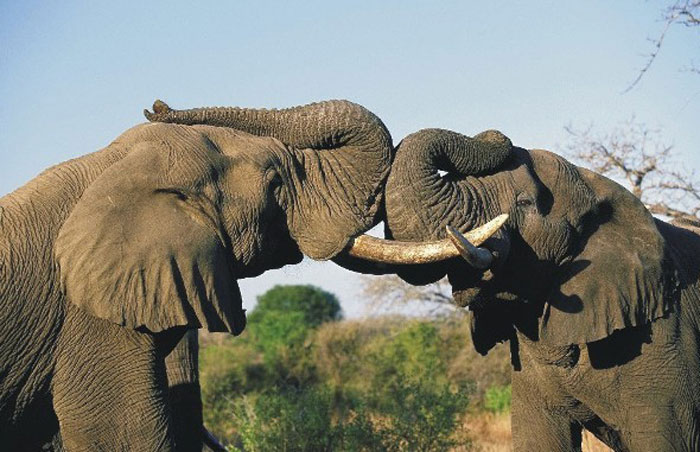
- Bull elephants periodically go into musth, when testosterone levels are up to 60 times higher than normal. Symptoms include unpredictable and aggressive behaviour, urine dripping from the penis, discharge from the temporal glands behind the eyes and a strong odour.
- Elephants grieve their dead and carry out ritual greetings at old carcasses – covering bodies of deceased elephants in plants and frequently visiting old carcasses to linger, gently touch and pick up bones. They also exhibit signs of post-traumatic stress disorder and depression.
- Bull elephants have internal testes, much like the rock hyrax – a rodent-like mammal and close relative to the elephant.
- Elephants can detect seismic signals via their feet, through the leg and shoulder bones and into the middle ear. They communicate with each other over distances up to 10 km via low-frequency rumbles, again picked up via the feet.
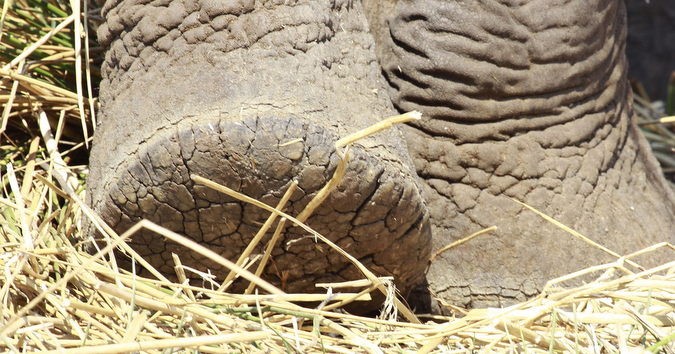
- Elephants starve to death once their teeth wear out. They produce six sets of teeth in their lives, with each set pushing forward from the back of the jaw to replace worn teeth at the front. After six such sets elephants run out of teeth, cannot chew food, lose condition and either fall prey to disease or predators or starve to death. Contrasts this with humans, where one set of adult teeth is produced from the top and bottom of the jaw, to replace the original set of baby teeth.
- An adult elephant requires up to 300kg of food and 160 litres of water per day.
Sources:
- Internet
- Africa Geographic
- National Geographic
- Smithsonian Museum



